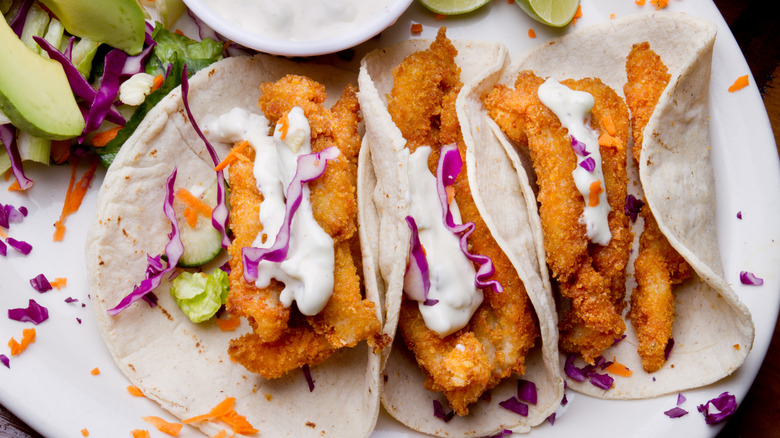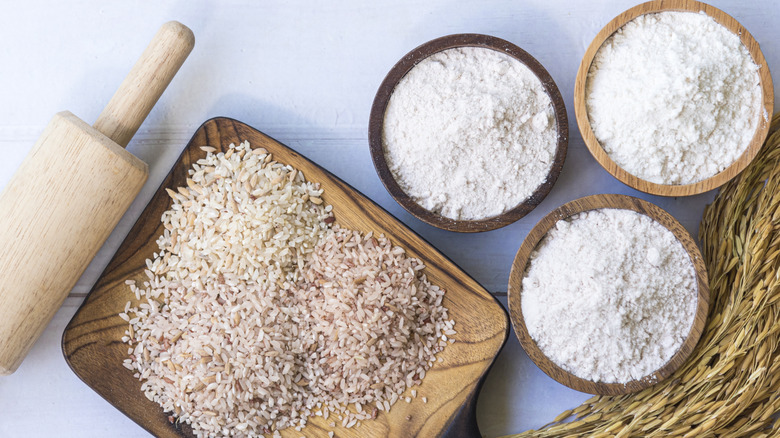Make The Crispiest Fried Fish Of Your Life With One Type Of Flour
If you've ever tried to cook up a perfectly fried fish, you'll be all too familiar with how elusive the desired crunch can be. Frying fish is tricky — and if you don't follow the right steps, you'll end up with a soggy, oily, or burned crust on your golden beer-battered fish and chips. But what if we told you that the key to crispy fried fish in your Baja fish tacos could come down to one simple ingredient swap? Food Republic consulted with David Davidov — recipe developer and creator of The Cooking Foodie –- who revealed: "Rice flour is one of my go-to ingredients for achieving ultra-crispy coatings, especially for fried fish."
Rice flour is a pantry staple that creates a lighter, crispier, and less oily coating. "Its key advantage lies in its low moisture absorption and fine texture, which helps it fry up quickly and evenly without becoming heavy or doughy," Davidov explained. While some oil is delicious, too much will cause a soggy crust. Compared to heavier wheat flour, rice flour has less protein, which results in a lighter, less dense crust that doesn't absorb as much oil, Davidov explains: "Unlike all-purpose flour, which can sometimes create a dense or cakey crust, rice flour crisps up light and shatteringly thin, perfect for delicate proteins like fish."
Another strength of rice flour is its texture, which has been finely milled. This results in ultra-crispy, golden color and facilitates "a more uniform and refined crunch," compared to coarser flours like wheat or cornmeal, which provide a "coarser, grittier bite," Davidov revealed. Best of all, Davidov noted that rice flour is gluten-free, so those with intolerance can eat fried fish to their hearts' delight.
Ways you can you use rice flour
The simplest way to use rice flour for crispy fish is by dredging your dry fish in a mixture of rice flour and seasonings, then frying. For even crispier results, David Davidov recommended: "Dip the fish in a light batter (such as rice flour [and] water or sparkling water) and then dredge it again in dry rice flour. This builds layers of crispness that puff slightly when fried." Using this advice, you could also swap the steps, dry dredging first and then wet dredging in a soda batter; this would make for ultra-crispy fish and chips.
For extra crispy results, "combining rice flour with cornstarch or potato starch (50/50 ratio) enhances the crunch factor," Davidov told us. This is because "starches help draw out surface moisture faster, which results in a blistered, ultra-crispy crust." The absorbed moisture expands and eventually evaporates, leaving behind a puffy, crackly crust. This combo is what makes Malaysian fried chicken so good.
Davidov recommended some prep and cooking steps to remember when using rice flour: "Letting dredged fish rest in the fridge for 10–15 minutes before frying helps the coating adhere better and improves the final texture." There is a fine line between crispy and burnt — Davidov said, "Keep the oil hot and steady (around 350 to 375 [degrees Fahrenheit] or 175 to 190 [degrees Celsius]). Rice flour browns quickly, so proper temperature control ensures a golden crust without overcooking the fish inside."


